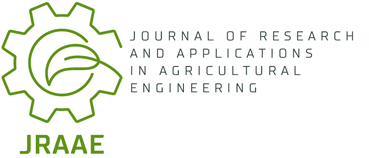Current issue
Online First
Archive
Instructions for Authors
Guide for Authors
Peer Review Policy
Research Ethics Policy
Crossmark Policy
Ghostwriting and Guest Authorship
Copyright
Open Access Policy
Plagiarism
About the Journal
Aim and Scope
Scientific Board
Publisher
Editorial Board
Indexing in Databases
Personal Data Protection
Repository Policy
Contact
ORIGINAL PAPER
Impact of complexing compounds on germination and early development of maize (Zea mays L.)
1
Poznan University of Technology, Institute of Chemical Technology and Engineering, ul. Berdychowo 4, 60-965 Poznan, Poland
2
Department of Agronomy, Poznań University of Life Sciences, Dojazd 11, 60-632 Poznan, Poland
3
Industrial Institute of Agricultural Engineering, Starolecka 31, 60-963 Poznan, Poland
Journal of Research and Applications in Agricultural Engineering 2016;61(4):96-100
KEYWORDS
ABSTRACT
The study focused on toxicity evaluation of selected complexing organic compounds (EDTA, rhamnolipids, quaternary pyridylketoximes and pyridineamidoximes) to monocot plant - maize (Zea mays L.) in aquatic and soil systems. Tests evaluating the seed germination and growth inhibition of shoot and root of maize were carried out at different compound concentrations (ranging from 0 to 1000 mg/kg of dry soil). It was observed that the presence of chelating compounds caused different effect on seed germination and early development of plant. The presence of complexing agents in aquatic system was more toxic than in soils and this toxicity depended on the type of chemical compounds as well as on the soil type. The cultivation on soil with chelating substance and polluted with heavy metals resulted in the strong inhibition of the maize seed germination and growth. From all the analyzed compounds synthetic EDTA was less toxic than others, like biosurfactant and new potential ligand of metals.
REFERENCES (16)
1.
Wang S. and Mulligan C.N.: Rhamnolipid biosurfactantenhanced soil flushing for the removal of arsenic and heavy metals form mine tailings. Process Biochemistry, 2009, Vol. 44, 296-301.
2.
Evangelou M.W.H., Ebel M., Schaeffer A.: Chelate assisted phytoextraction of heavy metals form soil. Effect, mechanism, toxicity and fate of chelating agents. Chemosphere. 2007, Vol. 68, 989-1003.
3.
Peters R.W.: Chelant extraction of heavy metals from contaminated soil. J Haz Mat. 1999,Vol 66, 155-210.
4.
Robinson B.H., Mills T.M., Fung L.E., Green S.R., Clothier B.E.: Natural and induce cadmium-accumulation in poplar and willow: Implications for phytoremediation. Plant Soil. 2000, Vol. 227, 301-306.
5.
Baik M.H., Lee K.F.: Transport of radioactive solutes in the presence of chelating agents. Ann Nucl Energy. 1994, Vol 21, 81-96.
6.
Mulligan C.N.: Recent advances in the environmental applications of biosurfactants. Cur. Opin. in Colloid and Interf. Sci., 2009, Vol 14, 372-378.
7.
Wen J., McLaughlin M.J., Stacey S.P., Kirby J.K.: Is rhamnolipids biosurfactant useful in cadmium phytoextraction? J Soils and Sedim., 2010, Vol. 10, 1289-1299.
8.
Gunawardana B., Singhal N., Johnson A.: Amendments and their combined application for enhanced copper, cadmium, lead uptake by Lolium perenne. Plant, Soil and Envir. 2010, Vol. 329, 283-294.
9.
Wenezel W.W., Unterbrunner R., Sommer P., Pasquaiina S.: Chelate-assisted phytoremediation using canola (Brassica napus L.) in outdoors pot and lysimeter experiments. Plant Soil. 2003, Vol. 249, 83-96.
10.
Barona A., Aranguiz I., Elias A.: Metal associations in soils before and after EDTA extractive decontamination: implications for the effectiveness of further clean-up procedures. Environ. Polut., 2001, Vol. 113, 79-85.
11.
Mosse K.P.M., Patti A.F., Christend E.W., Cavagnaro T.R.: Winery wastewater inhibits seed germination and vegetative growth of common crop species. J Haz Mat. 2010, Vol. 180, 63-70.
12.
Marecik R., Wojtera-Kwiczor J., Ławniczak Łukasz, Cyplik P., Szulc A., Piotrowska-Cyplik A., Chrzanowski Ł.: Rhamnolipids increase the phytotoxicity of diesel oil towards four common plant species in a terrestrial environment. Water Air Soil Pollut, 2012, Vol. 223, 4275-4282.
13.
Millioli V.S., Servulo E.L.C., Sobral L.G.S., De Carvalho D.D.: Bioremediation of crude oil-bearing soil: evaluating the effect of rhamnolipid addition to soil toxicity and to crude oil biodegradation efficiency. Global NEST Journal, 2009, Vol. 11, 181-188.
14.
Silva S.N.R.L., Farias C.B.B., Rufino R.D., Luna J.M., Sarubbo L.A.: Glycerol as substrate for the production of biosurfactant by Pseudomonas aeruginosa UCP0992. Colloids and Surfaces. B. Biointerfaces, 2010, Vol. 79, 174-183.
15.
Berglund T., Ohlsson A.B., Rydström J., Jordan B.R., Strid A.: Effect of nicotinamide on gene expression and glutathione levels in tissue culture of Pisum sativum. Journal of Plant Physiology, 1993, Vol. 142, 676-684.
16.
Taguchi H., Maede M., Nishitari H., Shimabayashi Y., Iwai K.: Effect of cinchomeronic acid and related compounds on the growth of Radish seedlings. Biosci. Biotech. Biochem. 1992, Vol. 56(12): 1921-1923.
We process personal data collected when visiting the website. The function of obtaining information about users and their behavior is carried out by voluntarily entered information in forms and saving cookies in end devices. Data, including cookies, are used to provide services, improve the user experience and to analyze the traffic in accordance with the Privacy policy. Data are also collected and processed by Google Analytics tool (more).
You can change cookies settings in your browser. Restricted use of cookies in the browser configuration may affect some functionalities of the website.
You can change cookies settings in your browser. Restricted use of cookies in the browser configuration may affect some functionalities of the website.


